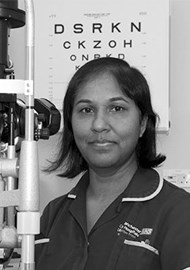Informed consent is an ethical and legal right of every patient [1]. It is essential that patients receive clear, concise and accurate information regarding the risks, benefits and alternatives to a potential intervention. In addition to this, the patient must be able to retain and evaluate this information [2].
In legal terms, any intervention performed without evidence of informed consent is grounds for negligence, malpractice or even assault [3]. Thus, clinicians who fail to convey all of the relevant information to their patient leave themselves open to legal action from the patient or their representatives. The General Medical Council (GMC) states that the key elements of the discussion between clinician and patient must be clearly documented on the forms [2]. The Department of Health (DH) has also issued a consent form model which is widely used throughout the NHS and acts as an aide-memoire for healthcare professionals [4].
With an increasing number of medical litigation cases every day, the consent process needs to be improved. One way to ensure a more standardised, high-quality consent process is to develop procedure-specific consent forms (PSCFs) which detail risks, benefits and alternatives to each proposed intervention. In a previous issue of Eye News (October/November 2017), Tan et al. compared generic forms and PSCFs for common surgical procedures and found that PSCFs achieved much higher adherence to Royal College recommendations than generic forms.
The Vitreo-Retinal (VR) unit at The Manchester Royal Eye Hospital (MREH) is a busy department with high turnover for both elective and emergency cases. The department has been using generic consent forms in the process of consenting patients for its procedures. These forms are essentially blank and therefore rely on the clinicians, who could be of any grade ranging from registrars and fellows to consultants, to include relevant information when taking consent from patients. There had been incidents in the department where important information was omitted on the consent form or when included, was not legible and had subsequently raised medico-legal issues.
As part of the root-cause analysis following these incidents, we conducted a short survey to assess the views of clinicians and advanced nurse practitioners on the use of generic consent forms in day to day practice. The survey showed that 100% of clinicians (n=10) did not think the blank consent forms were time-efficient, with 90% of clinicians admitting to omitting important risks on the consent forms occasionally. Ninety percent of clinicians also raised concerns about the legibility of their handwriting. All clinicians felt that it was important to have standardised information on the forms within the department and there was a lack of consistency in the information included when the generic forms were used. None of the clinicians surveyed thought the blank forms were easy to read for patients.
Following the survey, two procedure-specific consent forms for common VR procedures were introduced; one for retinal detachment repair and one for vitrectomy for other indications. To the best of our knowledge, there are currently no college guidelines on consent forms for VR speciality, unlike cataract surgery [5]. The risks and benefits to be included in the consent forms were therefore discussed amongst all surgeons within the department, taking reference from other tertiary centres’ consent forms as well as the general guidelines on consent forms from the GMC and DH [2,4]. The aim of the PSCFs was to create a more accurate, efficient and standardised consent process.
A further survey was conducted three months following the introduction of the new consent forms to assess the pros and cons of the new forms. In this survey, 100% of clinicians stated that they found the new forms more time-efficient, easier to use and technically more accurate. All clinicians and advanced nurse practitioners also thought the new consent forms were easier to understand for patients, and had improved the consent process. The survey demonstrated that PSCFs were overall well received in the VR firm at MREH, with a slight teething issue surrounding the availability of the new forms. This had since been flagged up and more forms are being ordered and made available in all clinical areas to resolve the issue.
In conclusion, clinicians found PSCFs to be helpful in real life in ensuring a more accurate and standardised consent process. PSCFs were also found to have improved efficiency in a busy department. However, it is important to note that PSCFs have standardised information and certain risks and benefits may not be relevant to the individual patient. It is therefore important for clinicians taking consent to tailor their explanation to individual needs during the process and not run the risk of involuntary automatism where the clinicians simply read out from the pre-printed forms.
References
1. National Institute for Clinical Excellence. Consent – procedures for which the benefits and risks are uncertain. 2003
www.nice.org.uk/guidance/
ipg56/documents/consent-procedures-
for-which-the-benefits-and-risks-are-uncertain2
2. General Medical Council. Consent: patients and doctors making decisions together. 2008
www.gmc-uk.org/static/
documents/content/Consent_
-_English_0617.pdf
3. Hall D, Hanusa B, Fine M, Arnold R. Do surgeons and patients discuss what they document on consent forms? US Department of Veterans Affairs 2015;197(1):67‑77.
4. Department of Health. Reference guide to consent for examination or treatment, second edition. 2009 www.gov.uk/government/
uploads/system/uploads/attachment_data/
file/138296/dh_103653__1_.pdf
5. RCOphth. Cataract Surgery Guidelines. London: Royal College of Ophthalmologists, 2010:55-83.
(All links last accessed June 2018).
COMMENTS ARE WELCOME







